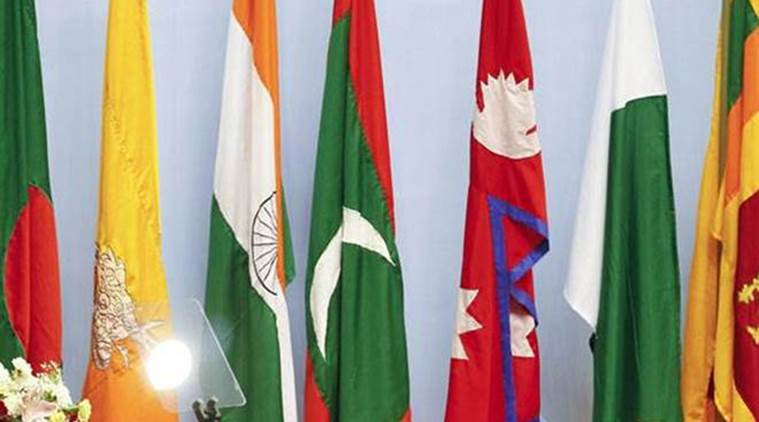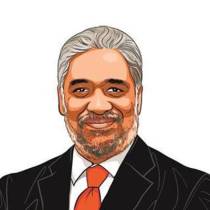Farewell to South Asia
As SAARC project loses all steam, Delhi needs to reimagine its economic and political geography

India has no reason to shed tears for the SAARC. It is no longer the only game in town (Representational)
Two recent developments on the margins of the United Nations General Assembly suggest that “South Asia” as a political construct, at least the one built from top down, may have had its moment. Perhaps it’s time India moved on.
According to reports, three of the eight South Asian foreign ministers left the room after making their speeches at the annual gathering in New York. They were from Afghanistan, Bangladesh and India. This could just be a clash of schedules in a busy diplomatic week in New York. But it also says something about the deepening crisis of credibility of the South Asian Association for Regional Cooperation.
According to reports, three of the eight South Asian foreign ministers left the room after making their speeches at the annual gathering in New York. They were from Afghanistan, Bangladesh and India. This could just be a clash of schedules in a busy diplomatic week in New York. But it also says something about the deepening crisis of credibility of the South Asian Association for Regional Cooperation.
The second was an event that did not take place. A meeting between the foreign ministers of India and Pakistan. The euphoria for a thaw between Delhi and Islamabad following the election of Imran Khan as the new Prime Minister of Pakistan did not even last a few days. Within 24 hours after announcing talks, India chose to pull out.
India, of course, is not the only one having problems with Pakistan. Its other South Asian neighbour, Afghanistan, like India, had entertained hopes for a fresh beginning in the ties with Pakistan. Kabul’s hopes that Imran, often called “Taliban Khan”, can quickly deliver on peace, have been tempered. Pakistan’s relations with Bangladesh have been in a deep chill for such a long time that no one expects a reversal of fortunes any time soon.
India’s refusal to engage Pakistan unless Islamabad addresses its concerns on cross-border terrorism, has also held up the next SAARC summit in Islamabad. The last summit of the leaders of the eight SAARC countries was convened in Kathmandu in late 2014. The real tragedy, of course, is that nothing of substance would come out even if the summit was held tomorrow in Islamabad.
Consider, for example, Pakistan’s decision not to sign agreements on regional connectivity at the Kathmandu summit in 2014. Pakistan was very much part of the extended negotiations and its bureaucrats and ministers had signed off on the outcome. But PM Nawaz Sharif was not at liberty to sign the agreements, thanks to the Pakistan army that reportedly pulled the plug on the agreements at the very last minute.
It is not a question of how we apportion the blame for this unfortunate situation. It is about coming to terms with the fact that the SAARC project has now lost all steam. That does not mean the region is in mourning. All countries are finding alternatives. After the Kathmandu Summit, Modi declared that he will not hold regional cooperation hostage to Pakistan’s veto.
Modi moved to focus on the so-called BBIN forum that brings together four countries of South Asia — Bangladesh, Bhutan, India and Nepal — for sub-regional cooperation in the eastern Subcontinent. The Modi government has also sought to reactivate the BIMSTEC forum that brings the BBIN countries as well as Sri Lanka with Myanmar and Thailand. The idea of a Bay of Bengal community is gaining traction by the day.
But not everyone in these subregional and trans-regional groupings has the same dream. Even as Kathmandu sleeps in the BBIN and BIMSTEC beds, sections of Nepal’s ruling elite want to “escape” South Asia into the vast folds of the Chinese embrace. If there is no SAARC, which helps constrain India, China could do the trick.
Meanwhile, Sri Lanka has begun to describe itself as an Indian Ocean country. Colombo is by no means betraying South Asian regionalism. It is merely rediscovering its geographic centrality in the Indian Ocean and celebrating it. Maldives, too, has so much to gain by leveraging its Indian Ocean location rather than pin its hopes on the dystopian SAARC.
For all their enthusiasm about hosting the SAARC summit, Pakistan’s political leaders know that the “deep state” in Rawalpindi, which resists even minimal commercial cooperation with India, is deeply committed to comprehensive economic integration with China.
That brings us to the question of China, whose Belt and Road Initiative is connecting different parts of South Asia to the adjoining provinces of China. Pakistan with Xinjiang, Nepal and Bhutan with Tibet, and Bangladesh with Yunnan. Beijing also seeks to integrate Maldives and Sri Lanka into its maritime strategy.
India may oppose the BRI, some in Pakistan might be having second thoughts, but China’s rise has begun to irrevocably alter the economic geography of the Subcontinent. Whether Delhi likes it or not, a “second Sun” — much brighter than India — has risen in the skies of the Subcontinent.
Meanwhile, Washington is changing its geopolitical playbook for our neighbourhood. Even as it looks for a way out of Afghanistan, it has embarked on an explicit strategy of balancing China in the region. Its new imagination privileges India and merges the rest of the Subcontinent into the vast Indo-Pacific. Before America signed onto the Indo-Pacific, Japan’s premier Shinzo Abe defined our region as the confluence of two seas (the Indian and Pacific Oceans) and two continents (Africa and Asia).
India has no reason to shed tears for the SAARC. It is no longer the only game in town. In fact, it was never much of a game. Nor should it mourn the passing away of “South Asia”. Change is the only enduring fact of life. Geographies are not static, they evolve, sometimes slowly and quickly at others. How we imagine and construct regions changes according to circumstances. The British Raj extended from Aden to Malacca at its peak. “South East Asia” did not exist until the Second World War. The “Asia-Pacific” came into usage only in the late 1980s. The “Indo-Pacific” was a novelty a decade ago.
“Political South Asia” was an invention of the 1980s. It has not survived the test of time. As India’s footprint goes way beyond the Subcontinent, Bangladesh becomes the throbbing heart of the Bay of Bengal and an economic bridge to East Asia and Sri Lanka emerges as an Indian Ocean hub, Delhi needs to reimagine its economic and political geography.
The writer is director, Institute of South Asian Studies, National University of Singapore and contributing editor on international affairs for the Indian Express
For all the latest Opinion News, download Indian Express App
More From C. Raja Mohan
- Raja Mandala: Recalling an older power playFor Arab states, US support is not enough security against Iran. That is why they are inviting France and Britain back into the Persian Gulf...
- Raja Mandala: The Gulf in foreign policyIndia is ignoring its interests by privileging Iran vis-a-vis the Arab world. ..
- Raja Mandala: The world beyond PakistanAt UN, India must look to engage with structural changes unfolding in the international system...







































No hay comentarios:
Publicar un comentario